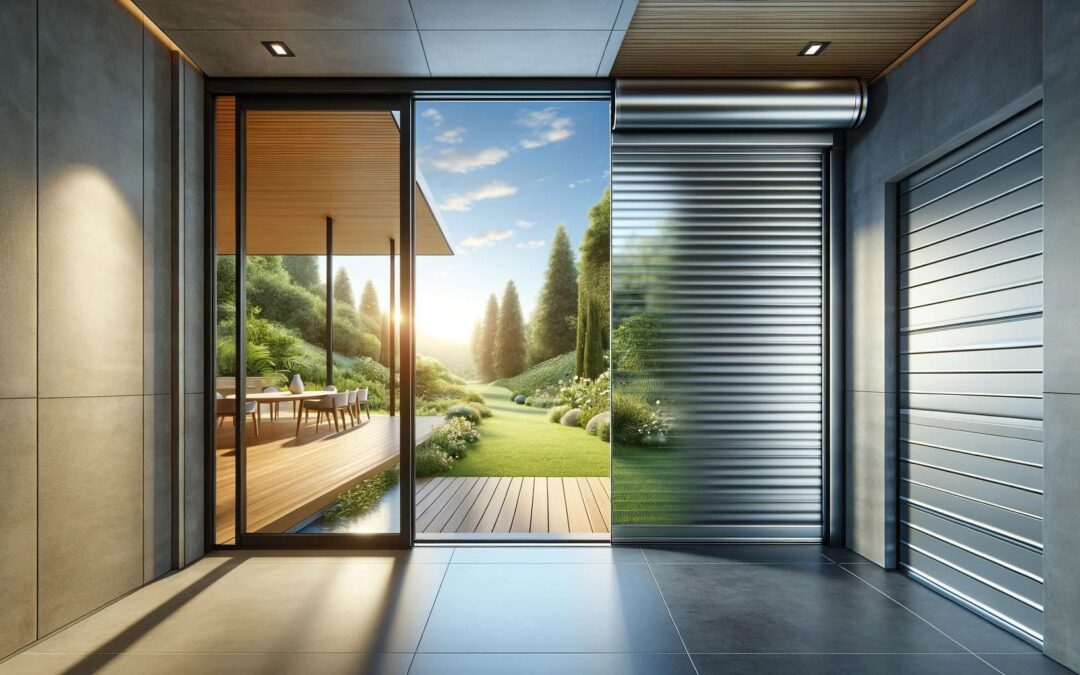In modern architecture, the choice between different types of doors can significantly influence the aesthetic and functionality of a space. While roller doors have been a popular choice for garages and commercial buildings, sliding glass doors are becoming increasingly favored in residential and office settings due to their numerous design advantages. This article explores the design benefits of sliding glass doors over roller doors, highlighting why they might be the superior choice for many applications.
Enhanced Natural Light
One of the most significant advantages of sliding glass doors is their ability to increase natural light in a space. Unlike roller doors, which are typically opaque and block light completely when closed, sliding glass doors are made of glass and allow for an abundance of daylight to penetrate the interior. This not only makes the space appear larger and more open but also can significantly reduce the need for artificial lighting during the day, which is both cost-effective and environmentally friendly.
Improved Aesthetics
Sliding glass doors offer a sleek and modern look that can enhance the overall aesthetics of a building. They provide a smooth transition between indoor and outdoor spaces, making them ideal for locations with gardens, patios, or impressive views. In contrast, roller doors often have a more industrial appearance, which might not blend as seamlessly with residential or high-end commercial architecture.
Space Efficiency
Sliding doors operate without a hinge—they simply glide along a track instead of swinging open. This means they don’t require additional space for the door arc as traditional roller doors do. This feature makes sliding glass doors an excellent option for spaces where square footage is at a premium. They maximize the usable area both in front of and behind the door. Making them particularly useful in tight quarters like balconies or smaller living rooms.
Versatility in Design
Sliding glass doors come in a variety of designs and can be customized to fit large openings, offering greater flexibility in terms of installation and style. They can be tailored with frames of different materials and finishes, from minimalist aluminum to classic wood, to match any room’s decor. Moreover, the glass itself can be customized in terms of opacity, color, and thermal insulation properties. Enhancing both the functionality and the aesthetic appeal of the door.
Energy Efficiency
Modern sliding glass doors are designed with energy efficiency in mind. They are available with double, or even triple-glazed glass that provides excellent insulation. This can help maintain a consistent indoor temperature, reducing the burden on heating and cooling systems and lowering energy costs. High-quality seals and weather-stripping prevent drafts, further enhancing their energy-saving potential. This is a significant improvement over roller doors, which generally offer poorer insulation.
Safety and Security
Contemporary sliding glass doors are constructed with toughened. Tempered glass that is difficult to break, offering a level of security comparable to that of roller doors. Additionally, advanced locking mechanisms, such as multi-point locks, can be integrated into sliding glass doors to enhance their security further.
Conclusion
Choosing between sliding glass doors and roller doors largely depends on the specific needs and design goals of a project. However, for those prioritizing light, aesthetics, space efficiency, and energy conservation, sliding glass doors offer substantial benefits. Their versatility in design and improved functionality make them a compelling choice for both residential and commercial properties seeking to merge indoor and outdoor spaces elegantly and effectively.

